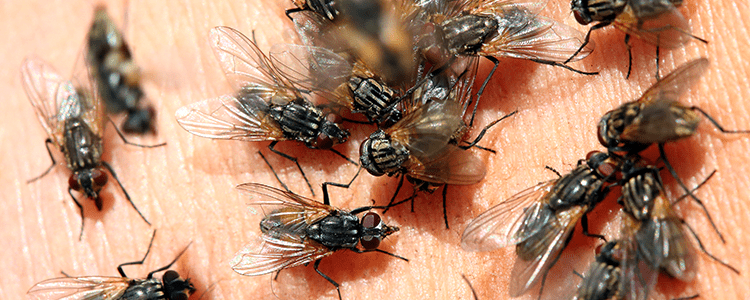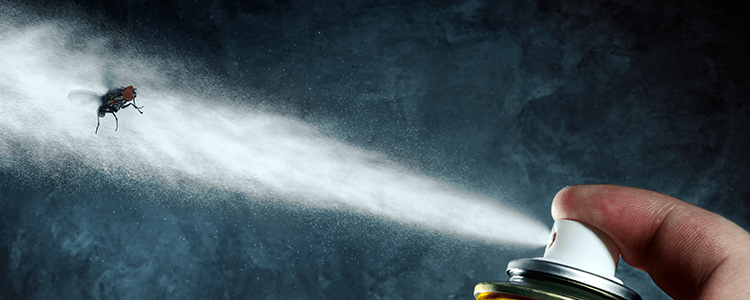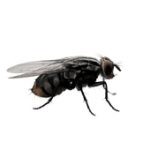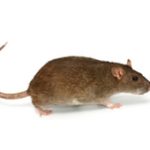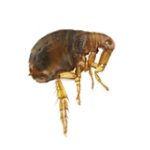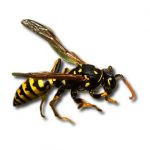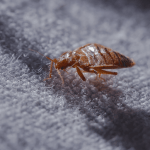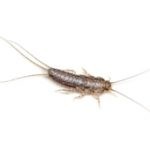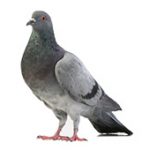Types of Flies in the UK
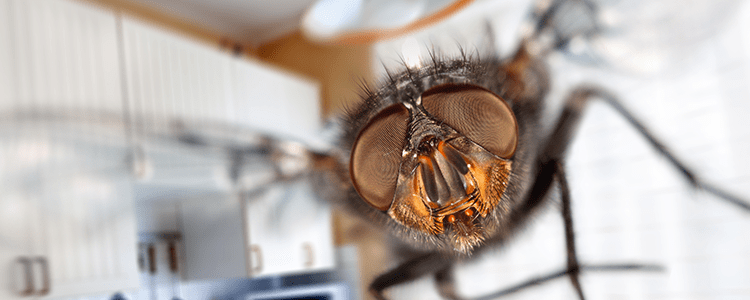
There are over 7,000 species of flies in the UK, spread across urban, rural, and coastal environments. Knowing the type of fly you encounter is crucial, particularly if you’re dealing with household fly infestations.
Here’s a more detailed look at some of the most common types of flies that you may find in the UK and how to control flies.
House Flies
The house fly (Musca domestica) is one of the most familiar domestic fly species UK homeowners will recognise. Typically grey in colour with four distinct dark stripes on the thorax, house flies have slightly hairy bodies and red compound eyes. Measuring around 6-7 mm in length, these flies are commonly found in kitchens, bins, and waste areas. Identification signs of house flies:
- Persistent buzzing around food and refuse
- Quick, darting flight patterns
- Presence of small black specks (droppings) on surfaces
House flies are particularly prevalent during the warmer months, making house flies UK a major nuisance in summer.
Cluster Flies
Physical Appearance: Also known as Pollenia rudis, cluster flies are around 8 mm to 10 mm long and have golden hairs on their abdomens. When at rest, their wings completely overlap over the abdomen. They are more sluggish than general house flies and differ from them in that they have a checked light and dark pattern on their abdomen, as opposed to the dark hairs of the house fly.
Habitat and Behaviour: This fly type generally emerges during summer and autumn and finds hiding places in people’s homes, which they typically enter through crevices and holes in attics, walls or windows. They search for warmth indoors to hibernate for the winter months. If the temperature reaches over 12 degrees Celsius, they become more active.
Feeding Habits: Cluster flies typically feed on earthworms in gardens. They are parasitic insects, although they do not bite like other types of flies.
Life Cycle: These flies typically have a life cycle of 30 to 50 days. In a season, three to four generations of cluster flies can be born. Eggs are laid in cracks in the soil where earthworms burrow. The larvae usually feed on the earthworm after hatching within three to four days. After such feeding, which lasts for a few days, the maggot stage lasts for about 13-22 days. Thereafter, they molt and pupate in the soil for a period of about 11-14 days. They then emerge from the soil as adult cluster flies.
Black Flies
Physical Appearance: The physical appearance of black flies varies. Their body length ranges from 5 mm to 15 mm. With an arched thoracic region, they have large, compound eyes, short antennae as well as large, fan-shaped wings. Although most black flies are black, some orange and yellow species have been found to exist. They are typically referred to as “gnat flies” or “turkey flies”.
Habitat and Behaviour: Black flies are attracted to water that is clean and fast-running. They are aquatic insects that rely on blood to survive. Such meals can come in the form of poultry, exotic birds, and sometimes even horses. They are often found near structures such as concrete dams as well as concrete-lined steam channels, as these sites are well-suited to the development of larvae and pupae. However, they are not known to enter human-built structures to lay eggs or hibernate.
Feeding Habits: As mentioned above, most of the females in this species require blood in order for the eggs to develop. Most of the species feed on birds or other small-sized mammals. Females usually feed during the day, often biting the upper body and head of the victim.
Life Cycle: The larvae and pupae live in water and newly-hatched black fly larvae produce “sticky silk” in order to attach itself to underwater objects such as stones and rocks. Once attached, it faces upstream and uses its fan-like mouthparts to feed on bacteria. Such larvae will then grow into pupae after which an adult black fly will emerge from the cocoon. It will reach the water’s surface and be ready to search for its next blood meal.
Bluebottle Flies
Physical Appearance: Calliphora vomitoria, or the blue bottle fly, is nearly twice as large as the common housefly ranging from 10 mm to 14 mm in size. The back of the head has long, yellow-orange setae, while the head and thorax are dull grey. As the name implies, the abdomen is bright, metallic blue in colour with black markings. The body and legs have black, bristly hairs. The antennae are short and clubbed. With red eyes and transparent wings, the legs and antennae are black and pink. The chest is bright purple in colour and it has spikes to protect it from predators. Another identifying feature is the orange hairs below the eyes.
Habitat and Behaviour: They usually thrive in warmer temperatures and are not commonly found during winter or autumn. In addition, the blue bottle fly is usually found in areas near rivers or in rural areas. It prefers higher elevations than other flies. They may hibernate during colder months until warmer temperatures revive the pupae.
Feeding Habits: Adult blue bottle flies feed on nectar. The larvae, on the other hand, feed on carrion or dung.
Life Cycle: The life cycle of a bluebottle fly is about two weeks. The life cycle starts with the laying of the eggs, followed by the formation of larvae, followed by pupae and culminating in the adult flies. The female will usually lay the eggs where she fees, which is typically in garbage, faeces or decaying meat.
Deer Flies
Physical Appearance: The deer fly is usually around 8.5 mm to 10 mm long. They are large flies with brightly-coloured eyes and have clear wings with dark bands on them. Although larger than the common housefly, they are smaller than the horsefly. The females have a splayed v-shaped marking on tergite 2, while the males’ abdomen is almost entirely black.
Habitat and Behaviour: Although the deer fly can occur in a variety of habitats, it is often found in damp or well-wooded areas. Mainly active from May to September, they are widespread in much of England and Wales, although they are less common north of Cumbria. The larvae are predatory and live in wet mud and debris at the edges of streams and other water sources.
Feeding Habits: This type of fly has a strongly developed taste for human blood and their bites can be painful. The females are commonly found to feed mainly on mammals and are attracted to their prey by smell, sight or the smell of carbon dioxide. Males typically collect pollen. Active under direct sunshine and at temperatures above 22 degrees Celsius, the females use their scissor-like mandibles and maxillae to make cross-type incisions and then continue to consume the blood.
Life Cycle: The larval stage can last between one and three years. Around 100 to 800 eggs are laid in batches on vegetation near damp places, water or water sources. The larvae feed on small creatures or rotting organic matter in or near the water. They emerge as adults following the pupal stage in spring and summer.
Other common British flies types
- Fruit flies – Tiny, at about 3-4 mm long, fruit flies are tan-coloured with striking red eyes. They are attracted to ripening and fermenting fruit, sugary drinks, and alcohol. Fruit flies reproduce rapidly, with eggs developing into adults in just eight days under ideal conditions. Keep fruit refrigerated, clean spills immediately, and regularly empty kitchen bins to prevent fruit fly infestations.
- Drain flies – Often mistaken for moths due to their hairy wings, are usually about 2-5 mm in size. They breed in the organic matter that builds up in drains, sewers, and other damp areas. While they do not bite, they can become unsightly in bathrooms and kitchens. Thoroughly cleaning drains with appropriate products can break the breeding cycle and eliminate drain fly problems.
- Horseflies – Horseflies are among the largest biting flies in the UK, with some species reaching up to 25 mm in length. They have large, brightly coloured eyes and are powerful, persistent biters. Horseflies are often found near water sources, woodlands, and livestock farms, where they feed on animal and human blood. Protective clothing, insect repellents, and avoiding outdoor activities during peak biting times can help prevent horsefly bites.
- Hoverflies – Often mistaken for bees or wasps because of their bright yellow and black striped bodies. However, they are harmless and beneficial insects, aiding in the pollination of flowers and crops. Hoverflies hover skilfully in mid-air and can often be seen in gardens throughout the spring and summer. Encouraging hoverflies by planting nectar-rich flowers can benefit gardens by boosting pollination and controlling aphid populations naturally.
What are the large biting flies UK?
Large biting flies in the UK are commonly horseflies, known scientifically as Tabanidae. These UK horseflies are robust, measuring up to 25 mm, and are characterised by:
- Large, brightly coloured eyes
- Broad bodies and strong wings
- Painful, bloodsucking bites
Horseflies are often found near fields, wetlands, and woodlands, especially during humid summer days. Their bites can be extremely painful and may even cause allergic reactions.
What are UK small white flies?
When encountering small white flies UK, you are likely dealing with whiteflies or moth flies. Whiteflies, particularly from the Aleyrodidae family, are tiny, sap-sucking insects often found on houseplants and garden vegetation. Features of small white flies:
- Tiny size (1–2 mm)
- Powdery white wings
- Congregate in large swarms when disturbed
Moth flies, or drain flies, can also appear whitish-grey and are usually spotted around sinks and drains, particularly in humid environments.
Takeaways
Understanding the types of fly in the UK you can encounter is key to maintaining a healthy home and garden environment. From the ever-present house flies to seasonal nuisances like biting flies and big black flies, each fly species has distinct habits and behaviours.
Whether you are dealing with small flies in UK homes or curious about the diversity of British fly species in your garden, accurate identifying flies techniques are essential. By recognising the common house fly and exploring the different types of flies, you can better manage infestations.
We only aim to provide some useful facts about flies. Anyway, we don’t provide any medical advice.



